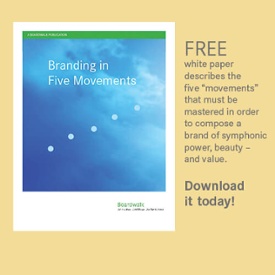NOTE: This blog post is reprinted from December, 2016. Reading recommendations below and in sidebar are new.
In his incredibly valuable book, Grow, ex-Procter & Gamble Global CMO, Jim Stengel, identified the 50 fastest-growing companies worldwide – now, known as the Stengel 50 – and sleuthed out the one characteristic they all held in common, the one thing that explained their phenomenal growth. After a decade-long study, he found these businesses crossed all sectors and industries, originated from many continents and countries, subscribed to all manner of management philosophies, sourcing, hiring, manufacturing and distribution practices. In the end, he determined they shared only one trait – they all rooted their company values in what Stengel calls the “Five Fields of Fundamental Human Values.” That is, all 50 of these businesses declare, as their originating purpose, a dedication to one of five categories of values. Stengel purists may object, but we’ve found it helpful to simplify the assertion. Let’s just say every business has a purpose and there are five categories of purpose that can be associated with rapid growth. So the question then becomes, can your brand be positioned in a way that aligns with one of these five rapid-growth purpose categories?







